Inspiration and Vision
My Upcycle project, titled Echoes of Reclamation, is deeply rooted in the “earth core” and “solar-punk” aesthetics, which celebrate the intersection of human innovation and the natural world. These movements emphasize sustainability, resilience, and the idea that nature can reclaim and transform human-made objects over time. The concept of creating something beautiful and functional from discarded materials resonated deeply with me, as it aligns with my personal values of environmental consciousness and the urgent need to address waste in our modern world.
One of my primary inspirations was the idea of creating a mini-ecosystem at home, as described in this article from Shaver’s Creek. The article discusses how even small, contained ecosystems can reflect the beauty and complexity of nature, and it sparked my imagination to think about how I could incorporate this concept into my project. I wanted to create a piece that not only repurposed waste but also told a story about the relationship between humans and the environment.
Another key inspiration came from the solar-punk movement, which envisions a future where technology and nature coexist harmoniously. Solar-punk art often features lush greenery, renewable energy, and a sense of hope for a sustainable future. This aesthetic resonated with me because it combines my love for design and my passion for environmentalism. I wanted my project to reflect this vision by blending natural elements with human-made materials, creating a piece that feels both futuristic and deeply connected to the earth.
I was also inspired by existing designs that incorporate reclaimed materials into functional art. For example, this solar-powered garden light demonstrates how everyday objects can be transformed into something both useful and beautiful. Similarly, this moss-covered sculpture by artist Diana Scherer showcases how natural materials can be used to create stunning, organic forms. These examples helped me visualize how I could combine plastic waste with natural elements to create a cohesive and meaningful artifact.
My vision for Echoes of Reclamation was to transform two discarded plastic containers into a unified object that not only serves a functional purpose but also evokes the beauty of nature reclaiming human-made waste. I wanted the final artifact to challenge viewers’ perceptions, making them question whether they were looking at trash or a harmonious blend of human innovation and natural influence. By incorporating organic textures, earthy tones, and natural materials like moss and dirt, I aimed to create a piece that felt alive, as if it were slowly being reclaimed by the earth.
Thematically, I wanted the artifact to spark conversations about sustainability, waste management, and the delicate balance between industry and nature. In a world where plastic pollution is a growing crisis, I believe it’s important to rethink our relationship with waste and consider how we can give discarded materials a second life. Through this project, I hoped to inspire others to see the potential in everyday objects and to think creatively about how we can reduce our environmental impact.
Specifications and Aesthetic Goals
Functional Goals
- Repurpose two plastic bottles into a single, functional object
- Use a 3D-printed adapter made from biodegradable PLA to connect the bottles
- Ensure the final artifact is stable, durable, and easy to assemble
Artistic Goals
- Create an object that mimics the appearance of nature reclaiming human-made waste
- Incorporate organic textures, earthy tones, and natural materials like moss or dirt
- Evoke a sense of wonder and curiosity, encouraging viewers to reflect on themes of sustainability and environmental impact
Fabrication Process
Step 1: Gathering Materials
The first step was to collect the necessary materials. I sourced two large plastic bottles from local recycling bins, ensuring they were clean and free of damage. For the natural elements, I planned on visiting a nearby creek to collect dirt and moss, which I planned to use to give the artifact an organic, reclaimed look, but it was cold and I didn’t want to dig through snow so I made do with random plant dirt.
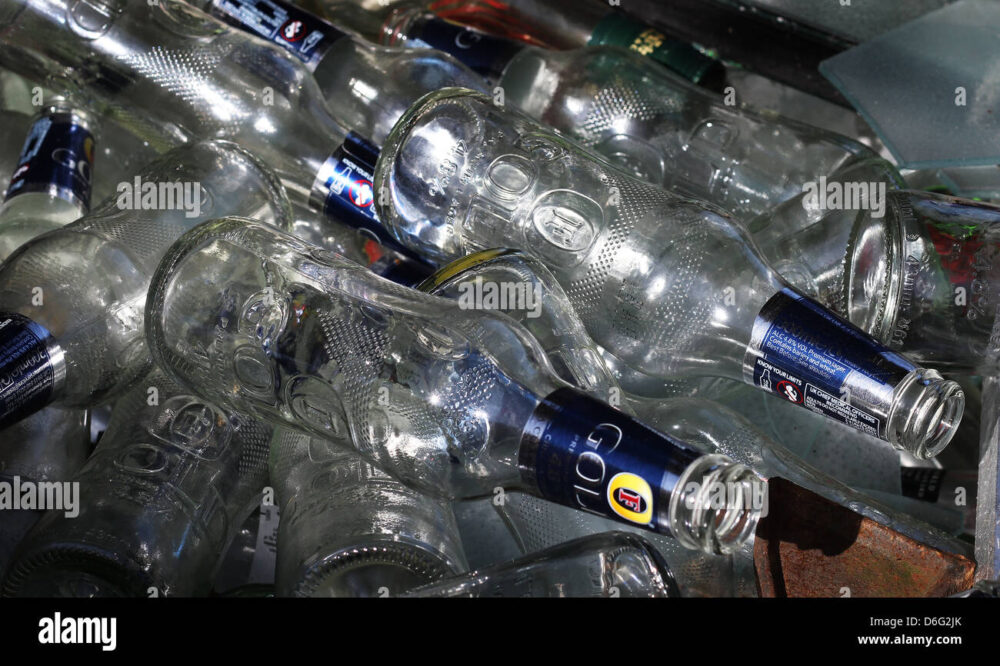
Collected materials, including plastic bottles, dirt, moss, and PLA filament
Step 2: Designing the Adapter
The adapter was a critical component of the project, as it would connect the two bottles and serve as the foundation for the natural elements. Using CAD software, I designed a 45-degree angled adapter with a rough, bark-like texture to mimic the appearance of wood. I chose black PLA filament for its discreet and natural look.

CAD rendering of the 3D-printed adapter.
Step 3: 3D Printing the Adapter
Once the design was finalized, I 3D printed the adapter using a Prusa i3 MK3S printer. The printing process took approximately four hours, and the final product was both sturdy and visually appealing.
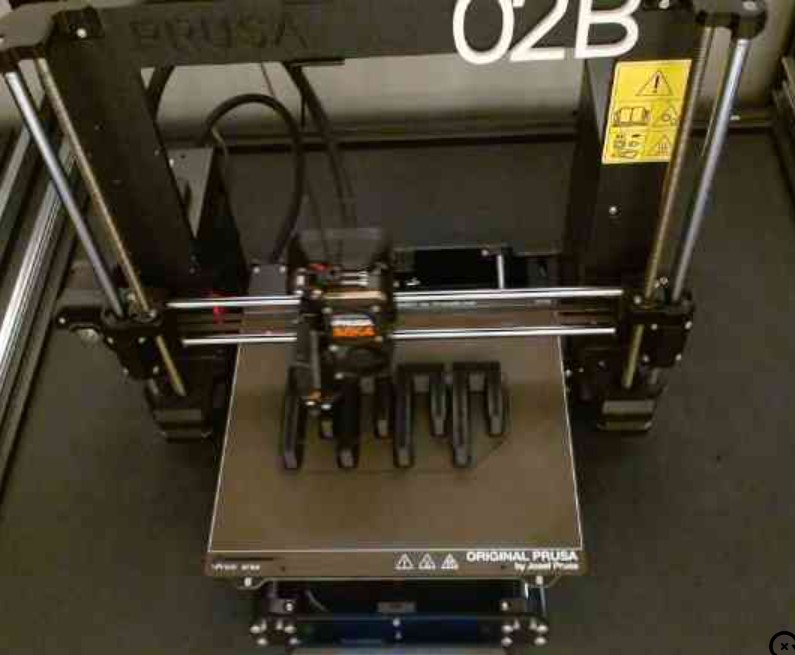
Adapter being 3D printed with grey PLA filament.
Step 4: Assembling the Artifact
With the adapter complete, I began assembling the artifact. I attached the two plastic bottles to the adapter, ensuring a secure fit. Next, I applied a layer of dirt to the exterior of the bottles, using a mixture of water and glue to help the natural materials adhere.
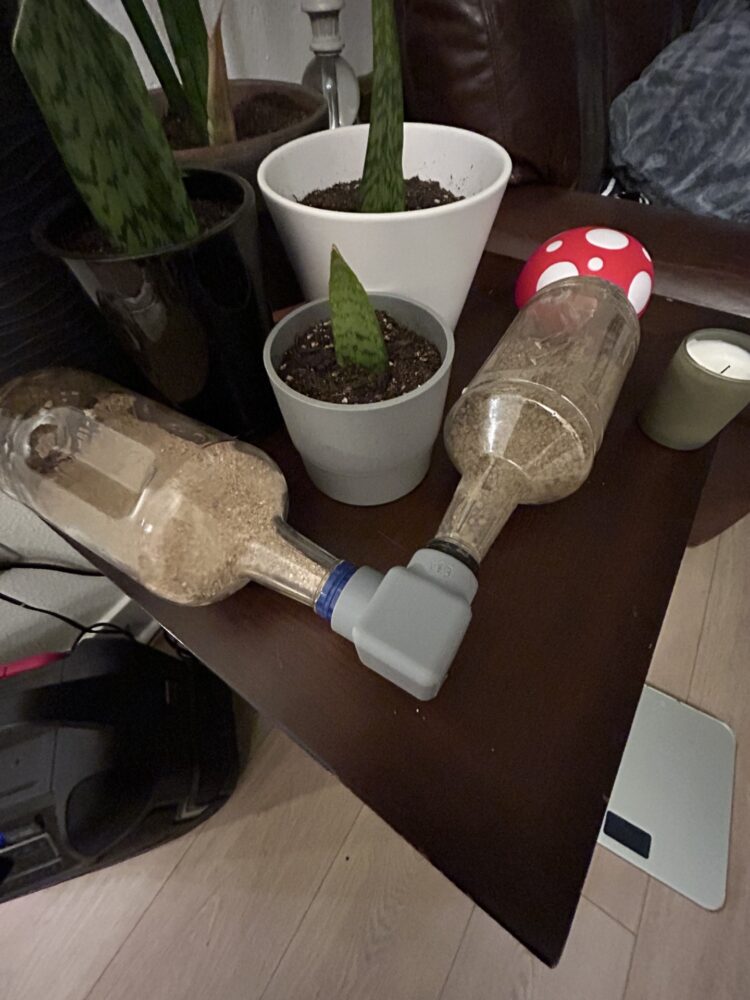
Applying rocks, sand, and dirt to the plastic bottles
Step 5: Final Touches
To enhance the organic appearance, I added small twigs and leaves around the base of the artifact, creating the illusion of a natural growth process. I also used some dust and snow to simulate weathering and wear, further emphasizing the theme of reclamation.
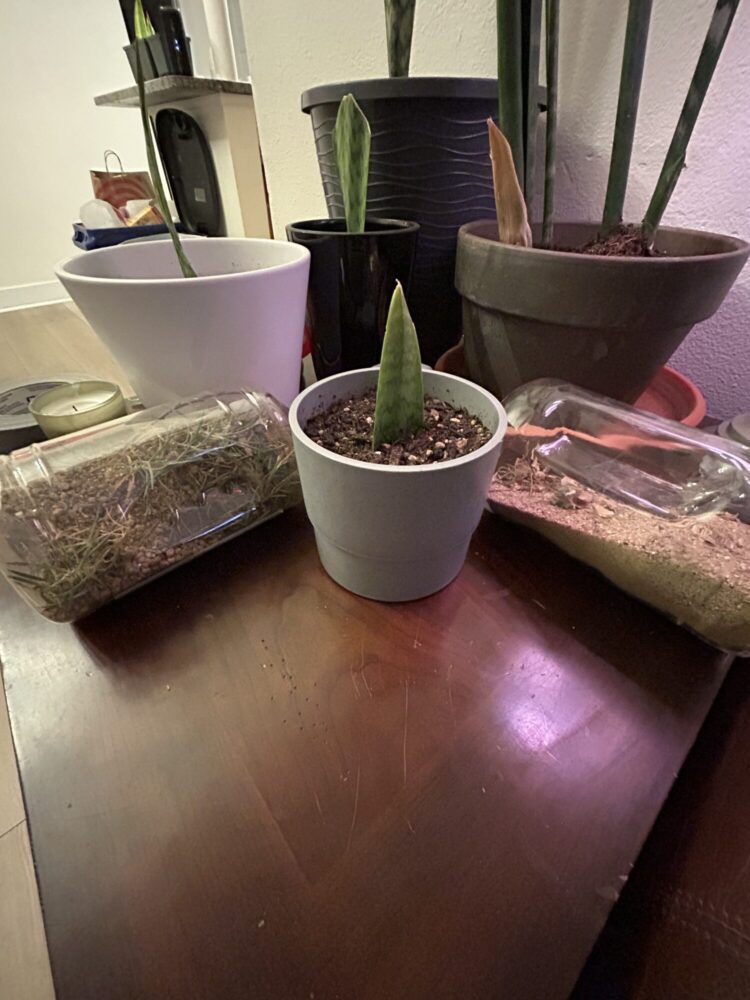
Adding twigs and leaves to complete the natural look
Final Artifact
The final artifact, Echoes of Reclamation, is a striking blend of human-made and natural elements. The two plastic bottles are seamlessly connected by the 3D-printed adapter, which is textured to resemble bark. The first is covered in a layer of dirt and brush, with twigs and leaves scattered throughout to create a sense of organic growth. The overall effect is one of harmony and transformation, as if nature has begun to reclaim the discarded plastic.
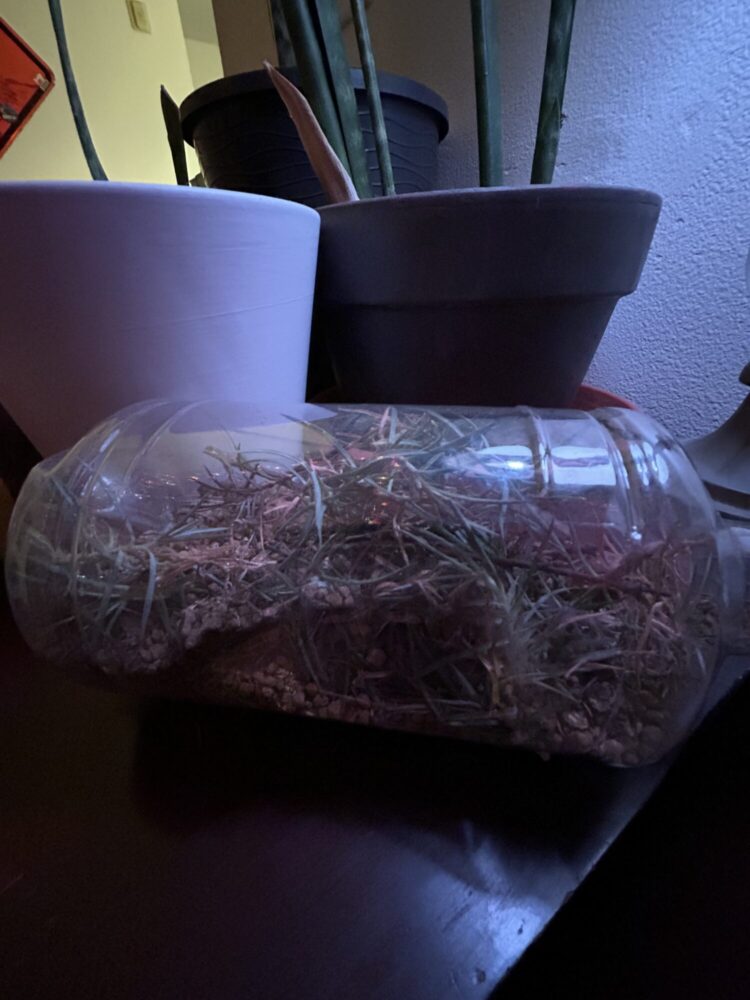
Grass Side

Sandy Side
Functional and Artistic Evaluation
Functional Goals
The artifact successfully repurposes two plastic bottles into a unified object. The 3D-printed adapter is sturdy and ensures a secure connection between the bottles. The final product is stable and durable, meeting all functional requirements.
Artistic Goals
Artistically, Echoes of Reclamation achieves the desired aesthetic of nature reclaiming human-made waste. The organic textures, earthy tones, and natural materials create a visually evocative piece that challenges viewers’ perceptions. The artifact sparks conversations about sustainability and environmental impact, fulfilling its artistic purpose.
What’s Next?
While I am pleased with the final result, there are a few areas I would like to refine in the future. For example, I could experiment with different types of moss or incorporate additional natural elements like lichen or small flowers. I might also explore using different colors or textures for the 3D-printed adapter to create variations on the theme.
For now, I plan to keep Echoes of Reclamation as a centerpiece in my home, serving as a reminder of the importance of sustainability and the beauty of nature’s resilience. In the future, I may revisit this project to create a series of similar artifacts, each with its own unique twist on the theme of reclamation.
Citations
- [1] Shaver’s Creek Environmental Center. (2020). Create Your Own Mini Ecosystem at Home. Retrieved from https://www.shaverscreek.org/2020/04/08/create-your-own-mini-ecosystem-at-home/
- [2] Instructables. Solar-Powered Garden Light. Retrieved from https://www.instructables.com/Solar-Powered-Garden-Light/
- [3] Colossal. (2021). Moss-Covered Sculptures. Retrieved from https://www.thisiscolossal.com/2021/03/moss-covered-sculptures/
- [4] https://www.google.com/url?sa=i&url=https%3A%2F%2Fwww.alamy.com%2Fstock-photo%2Fempty-alcohol-bottles.html&psig=AOvVaw35yUL_uFCaQXjL0LKsRpo0&ust=1740100971480000&source=images&cd=vfe&opi=89978449&ved=0CBQQjRxqFwoTCPD5oLaL0YsDFQAAAAAdAAAAABAE
- [5] DeepSeek
All images and videos are my own unless otherwise noted
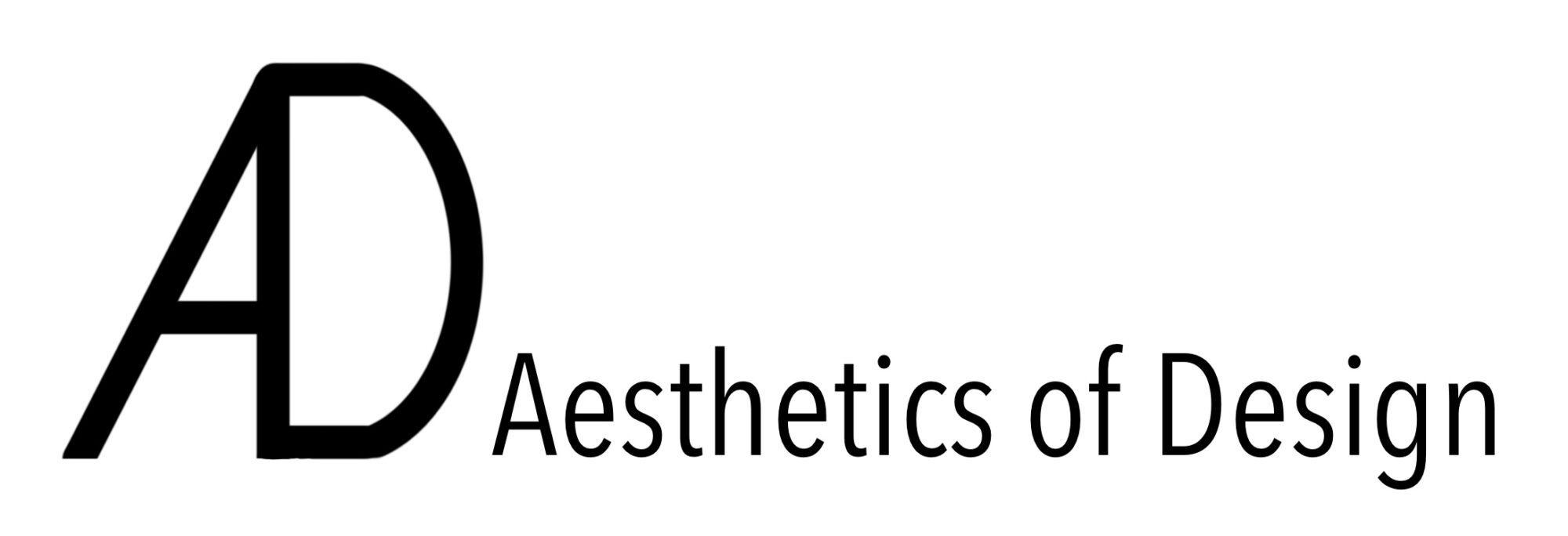
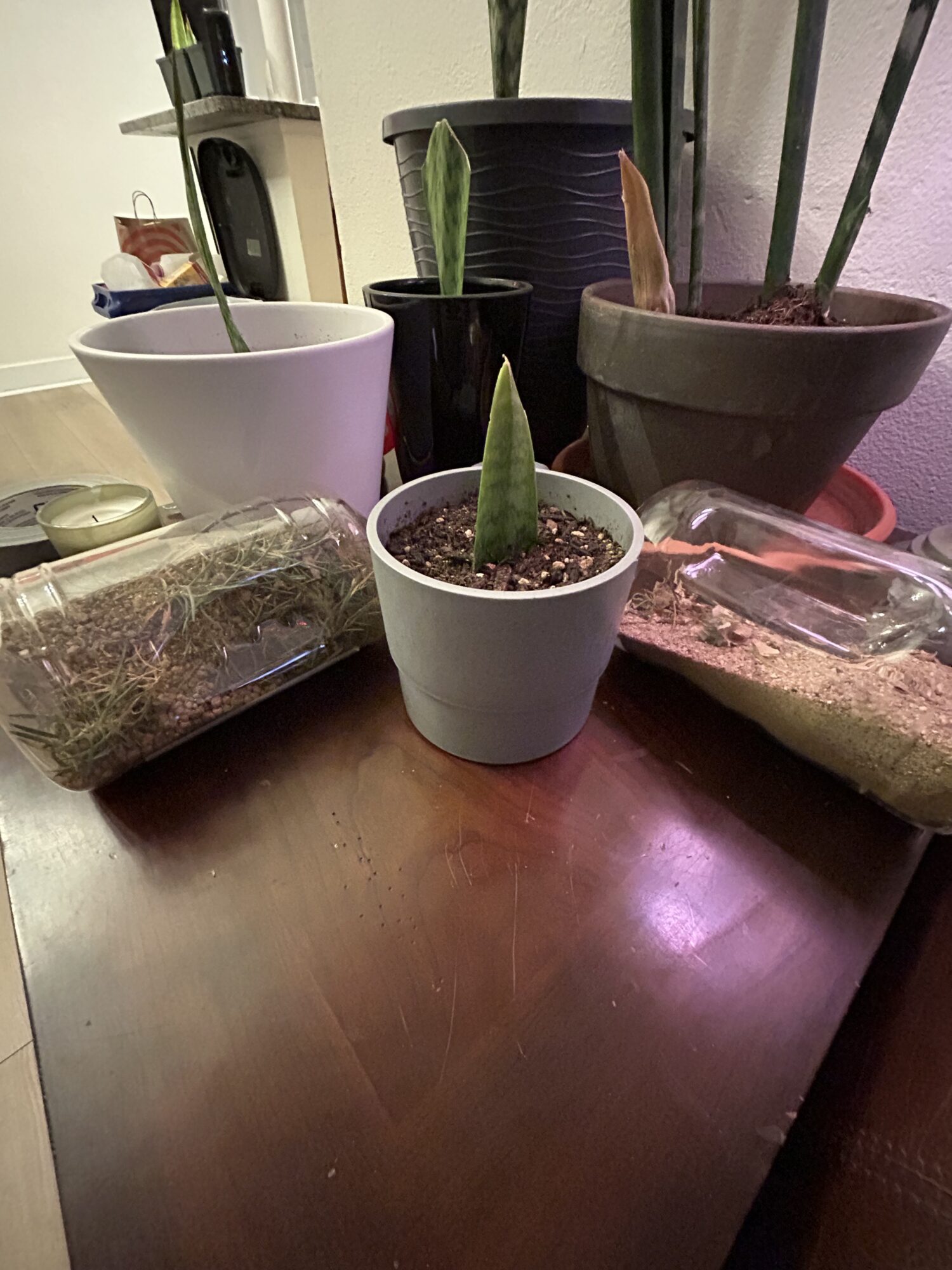
1 Comment. Leave new
I really enjoyed the name of your project. I find it very fitting to your message and design intent. I personally enjoyed the terrarium adjacent aspect of the design, The unique chambers almost remind me of an ant farm, and I wonder what this design style may look like in that context. I love how unique this was, and how many different combinations can be made from this.